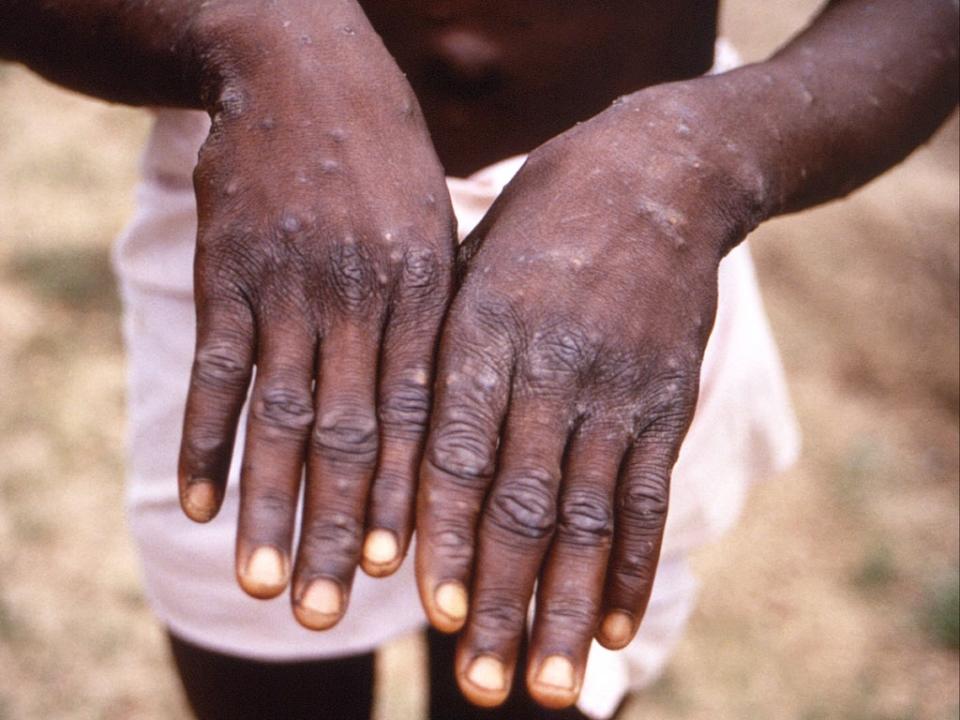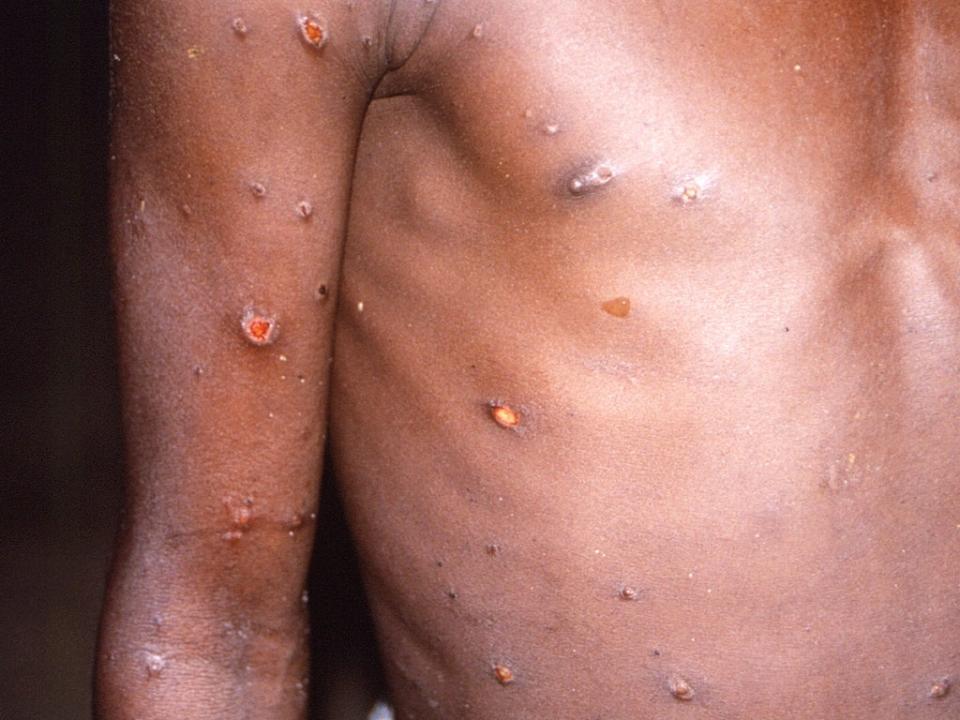Monkeypox in the US: Where is the disease and will it spread?
The US now has two presumed cases of Monkeypox after a patient in New York City tested positive for a virus related to the infection on Friday – two days after a man in Massachusetts became the first confirmed case in the country this year.
Cases of the rare infectious disease have suddenly started to spread across the globe in recent weeks, with infections confirmed in countries including the UK, Spain and Portugal.
Because the disease is rare and more commonly found in central and western African countries, the infections in these countries have raised some alarm.
The World Health Organization is now holding daily meetings on the situation, with an emergency meeting held on Friday among the committee responsible for advising on infection risks that could pose a global health threat.
With the rare infectious disease now confirmed on US soil, the American government is ramping up orders of a smallpox vaccine that is also effective against Monkeypox while urging the public not to be concerned.
Here’s everything you need to know about the outbreak and what may happen next:
What do we know about the first case in the US?
The man who was hospitalised in Massachusetts had returned from visiting friends in Nigeria in early May, the CDC and the Massachusetts Department of Public Health (DPH) said.
His case was confirmed on Wednesday and health authorities have worked to identify individuals who may have been in contact with the man while he was infectious.
The man had recently returned from Canada, and according to the CDC he travelled in a private vehicle.
What do we know about the New York case?
New York City health officials announced on 20 May that a patient had tested positive for a virus related to Monkeypox and is presumed to be the second confirmed case on US soil this year.
Two patients had been tested for Monkeypox with one of the patients ruled out as negative, according to the NYC Department of Health and Mental Hygiene’s Public Health Lab.
The second patient tested positive for Orthopoxvirus, the family of viruses to which Monkeypox belongs.
Confirmation on the individual’s diagnosis will come after the US Centers for Disease Control and Prevention (CDC) completes further testing but, until then, the patient is in isolation and is presumed to be positive.
Are there any other cases in the US?
The CDC has said it is investigating at least six other possible cases of the infection, after the individuals sat near an infected traveller on a flight from Nigeria to the UK earlier this month.
None of the six individuals are presenting any symptoms for Monkeypox and are said to be heathy and at low risk of contracting the infection.
What are the symptoms?
Monkeypox comes from the same family of viruses as smallpox, and presents itself as a fever, headache, muscle aches, and exhaustion. It can also present itself as a rash that begins on the face.
The CDC says “the main difference between symptoms of smallpox and monkeypox is that monkeypox causes lymph nodes to swell (lymphadenopathy) while smallpox does not.”
A few days into the infection, skin may appear like chickenpox or syphilis, and will fall off after scabbing.
Monkeypox can take anywhere between five and 21 days to after exposure to cause illness, and typically lasts up to four weeks.
Why is monkeypox spreading?
Monkeypox is spread through close contact between humans with an infection, and according to the CDC is primarily through large respiratory droplets.

Because respiratory droplets cannot travel more than a few feet, prolonged face-to-face contact is required, the agency says. Rodents have been blamed for spreading cases in central and west Africa, in situations where people are bitten or scratched by an infected animal.
Jimmy Whitworth, a professor of international public health at the London School of Hygiene and Tropical Medicine, told The Associated Press that the resumption of international travel following Covid-19 was partially responsible for the recent cases in the US and Europe.
"My working theory would be that there’s a lot of it about in west and central Africa, travel has resumed, and that’s why we are seeing more cases," said Mr Whitworth.
Another theory issued by Anne Rimoin, an epidemiology professor at UCLA in California, was that the eradication of smallpox in Africa and the phasing out of vaccinations had allowed monkeypox —which had been targeted with the same vaccine — to spread easily.
An international investigation into the outbreak of cases is ongoing.
What happens now?
The US Centres for Disease Control and Prevention (CDC) said it was preparing for the “possibility of more cases,” in the US following the first confirmed case in Massachusetts, but is urging calm among Americans.
CDC official Jennifer McQuiston said that “the general public should not be concerned” about the sudden rise in infections of the rare illness but admitted that “this is a very unusual situation”.
The Biden administration has taken steps to buy 13 million doses of Monkeypox vaccines, placing an $119m order with Bavarian Nordic for the Jynneos vaccine.
The vaccine is effective against both the Monkeypox virus and Smallpox.
A further $180m is also ready and waiting to buy even more vaccines if or when it is needed, altogether enabling the country to get 13 million doses into the arms of the American people.
Worldwide, the World Health Organization has started holding daily emergency meetings on the infection.
Has the US had monkeypox before?
Yes, there were two cases in the US last year, which were found in Texas and Maryland.
Both cases were connected to US travellers to Nigeria by the CDC, who said the cases were from a strain of monkeypox first detected in the west Africa country in 2017.
A shipment of animals from Ghana, also in west Africa, were responsible for a 2003 outbreak in six states — Illinois, Indiana, Kansas, Missouri, Ohio, and Wisconsin.
The outbreak resulted in 47 confirmed cases and according to the CDC was the first time monkeypox had been reported outside of Africa.
Where else has monkeypox been reported recently?
Authorities in a handful of European countries have announced Monkeypox cases in recent months, with nine confirmed in the UK, five in Portugal and 23 potential cases in Spain.
In a recent update, the UK government said at least two of the cases “have no travel links to a country where monkeypox is endemic, so it is possible they acquired the infection through community transmission.”

The first seven cases were connected to travellers from Nigeria, like with the 2021 cases recorded in the US, while the more recent cases were found “predominantly in gay, bisexual or men who have sex with men”.
Eight of the Spanish cases have also been connected to men who have sex with men, while in Portugal a group of 20 potential monkeypox infections were all among men, authorities have said.
In Spain, the cases have been restricted to the area in and around the capital, Madrid, and in Portugal authorities say the infections have been limited to the Lisbon and Tagus Valley region.
Is there a cure?
There is no specific cure for monkeypox, which was first recorded in 1970 in the Democratic Republic of Congo.
In the US, the smallpox vaccine, antivirals, and vaccinia immune globulin (VIG) can be used as potential treatments, the CDC says.
While most people recover from monkeypox within weeks, for one in 10 people the disease can be fatal, the World Health Organisation says.

